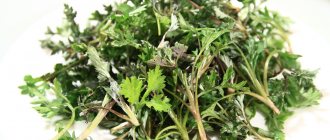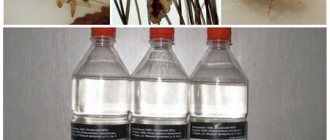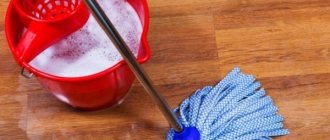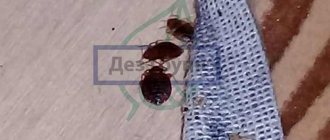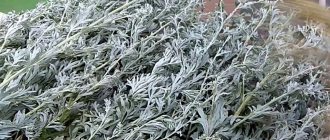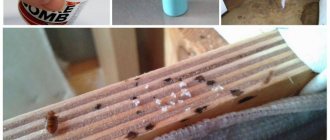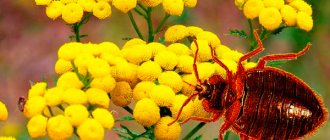A folk remedy is kerosene as a remedy against bedbugs. Tips and recommendations for use at home. The effect of kerosene on the bug. Effective against larvae. Security measures. Advantages and disadvantages of using kerosene at home.
When bedbugs appear in an apartment, country house or cottage, every owner wants to get rid of them as quickly as possible. Of course, such a neighborhood causes a lot of trouble and you can forget about a quiet life. Regarding specialized products, manufacturers provide us with a huge selection. But not everyone is in a hurry to use chemicals, preferring traditional methods of struggle. One of the folk remedies that is very popular is kerosene against bedbugs. How effective it is, its advantages, features and possible disadvantages, we will consider in detail.
Effect of kerosene
The process of oil distillation provides us with an indispensable product - kerosene. By the way, it has found wide application in various industries. It is also used in domestic conditions, and one of the ways of using it is to fight parasites. The fact is that the product has an insecticidal effect, which allows you to destroy harmful insects.
It is successfully used against bedbugs, lice, fleas and shows excellent results. A large number of modern chemical products are made based on kerosene. The great advantage of this substance is the ability not only to exterminate parasites, but also to destroy insect larvae, and not all modern means can provide such an effect.
Regarding kerosene, it has a complex effect, which is superior to most insecticides. It affects adults, destroys larvae and prevents the appearance of new bedbugs. If we talk about modern means, they all have a similar mechanism of action. Once in the body, the active substance affects the nervous system causing paralysis and then death.
Kerosene has a completely different effect, as an asphyxiant and poisonous agent. When the substance hits the bug, it begins to be absorbed into the body through the chitinous membrane and enters the respiratory tract. Next, the spiracles are blocked, which leads to the fact that oxygen does not enter the body, suffocation and death occur.
How does kerosene act on parasites?
Kerosene, unlike modern chemicals, does not block the functioning of the nervous system of bedbugs, but poisons the insects. Death after kerosene penetrates the body of parasites occurs almost instantly. The anti-bedbug chemicals that we see on store shelves do not act as quickly. It is also worth noting the fact that kerosene destroys adults, larvae and eggs. Most insecticides do not kill eggs.
Kerosene, when parasites enter the body, blocks the functioning of the respiratory system. Insects breathe through spiracles located on the body. Kerosene, enveloping the body of the bug, forms an airtight film. Oxygen starvation begins, which leads to the death of bedbugs.
How to use it correctly
The most important rule that must be observed when working with this substance is safety. Namely, you need to work with it while using personal protective equipment. When a room is being treated, it is necessary to ventilate the premises well, since the fumes released by kerosene are toxic. Another point is that it is highly flammable, which means that working with it near fire sources is prohibited.
In fact, there are quite a few ways to use kerosene at home. Quite often, other components are added to it to enhance the effect on bedbugs. It can be used in its pure form, with the addition of turpentine, vinegar and denatured alcohol.
In order for the treatment procedure to bring the most positive result, it is necessary to apply the product correctly. It is necessary to pay attention to the places where bedbugs can appear most often, where they have set up their home and where they might want to settle down. Pay attention to the cracks and insert a sufficient amount during processing.
You can apply the substance in any convenient way, for example, use a spray, you can use a medical syringe, or just take a cloth. After the first treatment, it is necessary to repeat the procedure after 3-5 days, this will ensure effectiveness and prevent new contamination of the premises. There may be several such repeated treatments.
Options for using kerosene
It is worth saying that these folk methods have been used for a long time and have managed to prove their effectiveness. Now there are several options for using this substance, so everyone can choose the one that is most convenient.
Most popular uses:
- This option involves using the product in its pure form. To do this, purchase kerosene and use it to treat surfaces. To make the application procedure as easy and convenient as possible, a spray bottle is used.
- For the second method, you will need to prepare a mixture. We need 100 g of kerosene, a naphthalene tablet (5 g), 50 ml. creosole. All components must be thoroughly mixed to obtain a homogeneous mixture. Then the surfaces are treated with this solution. The procedure is carried out once a month, repeated until the pests completely disappear.
- You will need to prepare a solution, for this we take 1 part turpentine, 2 parts kerosene. Pour warm water into a separate container and dilute 4 parts of green soap in it. Then mix all the ingredients well. Carefully treat the room with this solution every day until the parasites disappear. After a month, it is necessary to carry out prophylaxis.
- For this recipe you will need: turpentine - 12 parts, kerosene - 6 parts, denatured alcohol - 3 parts. Mix this mixture well and add 1 part of naphthalene. The solution is ready for use; surfaces where bedbug colonies and possible habitats live are treated.
How to use kerosene against bedbugs
Kerosene against bedbugs will only be effective if it is used correctly. Since bedbugs are miniature in size, they are able to hide in the smallest crevices, which become favorite habitats for parasites. Therefore, treating the premises is not limited to formally spraying the floor and contaminated furniture with kerosene. Pour liquid into each crack and treat the space between the baseboards and walls.
Kerosene has a specific smell. Therefore, not everyone prefers to use it in its pure form. There are different options for preparing kerosene-based emulsions against bedbugs. We will look at 4 options that are used most often.
- Mix kerosene and ethyl alcohol in equal quantities. Add naphthalene or camphor oil at the rate of 7 grams per 200 ml of liquid. After treatment, the room should be ventilated.
- Mix kerosene, laundry soap, and naphthalene in a ratio of 5:4:1. The emulsion is ready for use.
- A popular remedy for fighting bedbugs is an emulsion consisting of kerosene, turpentine and naphthalene, which we take at a ratio of 7.5: 2: 0.5.
- You can use an emulsion consisting of 9 parts kerosene and 1 part tobacco dust. But this product cannot be used immediately after preparation. It should sit for 48 hours. Then, the composition is filtered.
Any of these remedies helps get rid of harmful insects that cause a lot of inconvenience. After treatment, ventilate the room and do general cleaning. Surfaces treated with emulsions should be washed with a saline solution.
It is advisable to treat the room at least 2 times. During the first treatment, some insects hide in air vents, sewer pipes, etc. Some parasites may not have received the emulsion in sufficient quantity or not. To destroy the parasite, it must be doused entirely, which is not always possible. If not all spiracles are covered with an airtight film, the insect will survive. Therefore, you should repeat the procedure after 2-3 days, even if you do not find surviving bedbugs.
Separately, it should be said about upholstered furniture, which is a favorite habitat for bedbugs. It is not advisable to pour any emulsions on a sofa or soft chairs that contain kerosene. It is very difficult to get rid of the pungent odor later. It is advisable to use insecticides that are odorless when treating upholstered furniture.
Security measures
Many people know that kerosene is not a completely safe substance. It is poisonous, and working with it requires special attention and safety precautions.
If the premises are to be treated, be sure to follow the following recommendations:
- Any procedures performed with the substance must be carried out in a respirator, which will prevent toxic fumes from entering the body through the respiratory tract.
- You must use safety glasses to protect your eyes. If the insecticide gets on the mucous membrane, rinse it with plenty of water as quickly as possible.
- During the work, all sorts of situations are possible; if suddenly this drug gets into the digestive system, measures must be taken immediately. We drink a large amount of water, about 3 glasses, to induce vomiting, then go to the hospital.
- When processing, the room should be well ventilated to prevent the accumulation of toxic fumes.
- There should be no flames in the room, since the product is flammable and highly flammable.
As practice shows, proper use of the substance ensures safety. In addition, many years of practice have proven that it is effective and brings good results as a means of exterminating adult individuals, destroying larvae and, of course, a preventive effect.
Rules for use at home
- You need to work with it in pants, a long-sleeved jacket and always rubber gloves, this will protect your skin;
- To protect the respiratory tract we use a respirator;
- In case of contact with the skin or mucous membrane, rinse with plenty of water;
- If it enters the gastrointestinal tract, be sure to induce vomiting; to do this, drink a large amount of water at a time, then you need to take activated charcoal and consult a doctor;
- Make sure that the windows in the room where the procedure is being carried out are open; if you feel unwell, you should immediately go out into the fresh air;
- When processing is carried out, there should be no strangers in the room, only the person doing the work, and there should be no animals;
- At all stages, comply with fire safety measures, you cannot smoke, light matches, turn on the gas stove and exclude any sources of fire;
- The product is not intended for treating textile items, firstly, the products may lose their appearance, and secondly, they absorb odors which will be very difficult to get rid of;
- The apartment should be well ventilated, and wet cleaning can only be done after 2 days.
Advantages and disadvantages
Of course, there is simply no ideal insecticide; each can offer its own advantages, but each also has disadvantages. Therefore, before deciding in favor of this method, you need to weigh all the pros and cons.
Advantages:
- Availability and low price. You can buy it anywhere, and the low price will please anyone.
- Efficiency. This is an absolute advantage that has been proven in practice. In addition, it can kill larvae, which significantly increases its effectiveness.
- Use at home. No special skills or training required.
Flaws:
- The procedure must be carried out several times, this is the only way to achieve a positive result.
- Of course, the flammability of the product is considered a disadvantage, so any work with it requires maximum care.
- This is a toxic liquid and upon contact with skin, allergic reactions are possible; the vapors are also poisonous and cause poisoning if they enter the respiratory tract.
- If the room is poorly ventilated, then in addition to an unpleasant odor, headaches may appear, which indicates that harmful fumes are entering the body.
It is worth paying attention to one more point. Efficiency is achieved only through direct contact of the insect and the oil product. Regarding the smell, bedbugs are absolutely indifferent to it; moreover, they get used to it very well and the “aroma” does not bring any positive effect. Therefore, treatment must be carried out taking into account these points, because individuals who simply retreated to a safe distance will definitely return after time.
Recommendations for using kerosene against bedbugs at home
Kerosene is a toxic product that can cause an allergic reaction or poisoning if it comes into contact with the surface of the skin or mucous membranes. If you use it ineptly, it will not only get rid of insects, but also cause harm to human health.
When a person breathes kerosene vapor for a long time or the solution enters the body, drug intoxication occurs and a state of euphoria is felt.
Kerosene may cause loss of consciousness, headache or dizziness. In some cases, it has a negative effect on the liver.
Reviews from people
A complete picture of a particular product can only be obtained after studying the reviews of people who have already used this product.
Here's what they're talking about:
- After using it for two weeks, headaches appeared. In addition, a cough began to appear, which was accompanied by chest pain.
- The premises were treated for a month, but we only succeeded in reducing the activity of the insects; they did not disappear, they simply began to annoy the residents a little less.
- The first days of use led to the fact that everyone living in the apartment developed symptoms such as cough and runny nose.
Regarding reviews, you should always take into account the fact that everyone uses the product as they see fit. After all, these are folk methods and there are no strict rules for its dosages and proportions.
Chemicals against bedbugs
Now there are many different products that manufacturers specifically develop for baiting bedbugs. These products are available in different forms - some in the form of powders , which must then be diluted with water, some in the form of concentrates . And some are sold ready-made, just take it and use it - for example, aerosols and ready-made liquids . As an example, we will give just a few of these chemicals with descriptions and reviews of people who successfully poisoned bedbugs with one or another means.
Efficient Ultra
Manufactured by Hallmark Chemical, The Netherlands
- Product form: insecticide in milky-white liquid
- Container volume – 1 liter polyethylene bottles.
- Active components in the composition – Dicarboximide (MGK-264) 4.96%, Piperonyl butoxide (PPB) 1.66%, Propoxur 17.2%, Tetramethrin 0.86%
- The focus of the drug is to combat harmful insects and bacteria. Often used to prevent epidemics.
- How to use - the drug must be diluted with water strictly according to the instructions that come with the canister (the norm for insecticide is 5 grams of product per 1 liter of water). The finished working solution or concentrate is simply sprayed through a spray bottle.
- One hundred percent effect after treatment occurs within 24 hours , and the first signs of insect death already show themselves after 2-4 hours.
- Toxicity is low (hazard class 4). But it is better to carry out the treatment indoors, where there are no people or pets.
- Shelf life is no more than 2 years, the drug is resistant to low temperatures (can be stored at temperatures down to -20˚C).
- Cost – 2200 rub.
Averfos
- Manufacturer – Russia
, . - The form of release of the product is concentrate
. - Container volume – 1 l.
- The active ingredient is chlorpyrifos 48% .
- The effect after treatment occurs within 24 hours and lasts for another 3 months.
- Preparation of solution: 5 ml/l; consumption – on non-absorbent surfaces 50 ml, on absorbent surfaces – 100 ml per 1 square meter.
- Toxicity is high.
- Average price - 1550 rubles .
BUY
Review:
Sveta, 20 years old, Chelyabinsk. My mother works at the sanitation station. And one day, when bedbugs appeared in our hall, she had to bring some of this drug from work. It was called "Averfos". Removes nasty insects at once! I didn't even have to carry out multiple treatments. True, we left home for a couple of days. But when we arrived, we even saw dead bedbugs behind the sofa.
Medilis-CIPER
- Product release – Russia, company “Medilis”.
- Product form – concentrate.
- Active ingredient – cypermethrin 25%
- Toxicity – medium, class 3
- Volume 500 ml.
- Price – 1500 rub.
BUY
Review:
Natalia, St. Petersburg. I bought Medilis, which was praised on the Internet, but in the end I had to use half a bottle to more or less immobilize the bedbugs on the baseboards where they appeared. Thank God, such dirty tricks didn’t reach the bed or the upholstered furniture. The effect is serious.
Medilis Cyper video:
